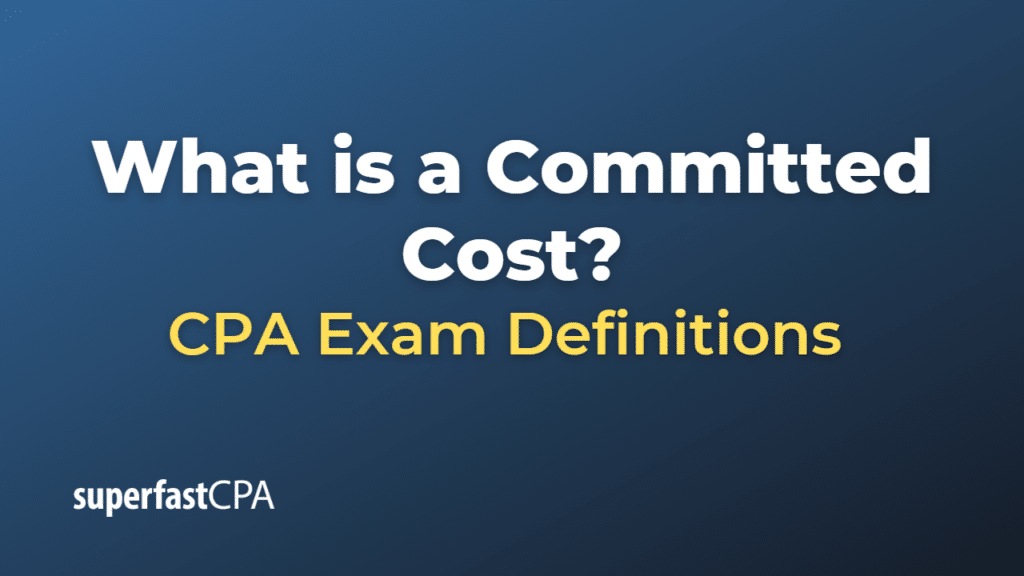Committed Cost
A committed cost, also known as a fixed or sunk cost, is an expense that a business has already incurred or is obligated to incur in the future, regardless of its level of output or activity. These costs are typically associated with long-term contracts, legal obligations, or investments that cannot be easily altered or eliminated in the short term.
Committed costs are often contrasted with discretionary costs, which are expenses that can be adjusted or eliminated based on the needs or decisions of management. Committed costs are generally considered less flexible because they are associated with the ongoing operation of a business and are not easily changed in response to changes in business conditions or management strategies.
Examples of committed costs include:
- depreciation: The depreciation of fixed assets, such as machinery or buildings, is a committed cost, as the business has already invested in the assets and must account for their depreciation over time.
- Rent: If a business has entered into a long-term lease agreement for office space or retail premises, the rent expense is considered a committed cost because the business is contractually obligated to pay it.
- Salaries: Employee salaries, particularly for full-time staff, are often considered committed costs, as the business has a legal and contractual obligation to pay them.
- Loan repayments: The principal and interest payments on loans are committed costs, as the business has a contractual obligation to repay the borrowed funds according to the terms of the loan agreement.
Understanding committed costs is important for businesses because it helps them identify expenses that cannot be easily reduced or eliminated, which can impact their ability to adapt to changing market conditions, control costs, or improve profitability. When preparing budgets, financial forecasts, or evaluating cost-cutting measures, businesses should carefully consider the nature of their committed costs and their potential impact on financial performance.
Example of a Committed Cost
Let’s consider a hypothetical example to illustrate the concept of committed costs in a small manufacturing company.
Imagine that ABC Manufacturing produces high-quality furniture. To operate its business, the company incurs various costs, including some that are committed costs. Here are a few examples:
- Rent: ABC Manufacturing has entered into a 5-year lease agreement for its factory premises. The rent for the factory is $10,000 per month, and the company is contractually obligated to pay this amount regardless of its production levels or sales. The rent expense is considered a committed cost because ABC Manufacturing cannot easily change or eliminate it in the short term.
- Salaries: The company employs a team of skilled craftsmen, designers, and administrative staff. Their salaries and benefits are also committed costs, as ABC Manufacturing is legally obligated to pay them according to the terms of their employment contracts.
- Loan repayments: To purchase machinery and equipment for its factory, ABC Manufacturing took out a 7-year loan of $500,000 with a fixed interest rate. The company must make monthly principal and interest payments on the loan, which are considered committed costs, as the business is contractually obligated to repay the borrowed funds.
- Depreciation: The machinery and equipment used in the factory have a limited useful life and must be depreciated over time. Depreciation is a non-cash expense that represents the decrease in the value of the assets due to wear and tear, and it is considered a committed cost because the company has already invested in the assets.
In this example, ABC Manufacturing’s rent, salaries, loan repayments, and depreciation are all committed costs, as the company is obligated to incur these expenses regardless of its level of output or activity. Understanding these committed costs is important for the company’s financial planning, budgeting, and decision-making processes, as it helps management identify areas where cost reduction or reallocation may be limited or more challenging to implement.












